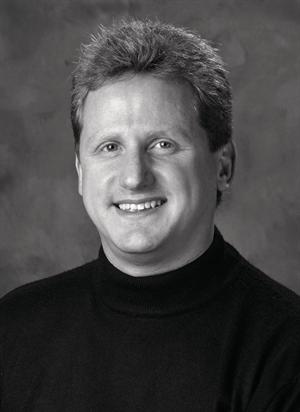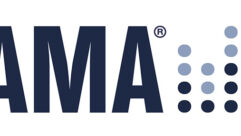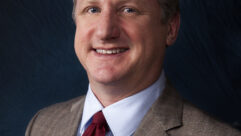

Q&A with Mark Brunner, Shure
The FCC finalized rules for operating wireless devices and pro audio systems in the TV spectrum. Shure lobbied hard to protect pro AV. In case things didn’t work out, it also came up with new gear.
Mark Brunner, Shure
MARK BRUNNER, SHURE: Having wrestled with the Federal Communications Commission for years over white spaces issues in the TV frequency band, wirelessmicrophone-maker Shure previewed Axient, a new platform designed, in part, to overcome potential interference for pro audio users. Brunner, Shure’s senior director of brand management and former head of product management, explained the end game of the white spaces debate.
PRO AV: Judging from the new products, Shure has certainly been busy. Lobbying the FCC all these years wasn’t enough?
BRUNNER: In the early part of the decade, we obviously saw changes coming in the spectrum landscape and knew that certain technologies were going to be important. Depending on the outcome of any regulatory decisions, we needed to have technical solutions in hand to maintain the status quo or to forward the future of wireless audio. At the same time we knew that we had to make an investment in resources to try to help the FCC understand the state of play in wireless audio. Those were simultaneous and highly linked efforts.
PRO AV: And are you satisfied with the outcome of your efforts with the FCC?
BRUNNER: We’re very pleased that we ended 2010 and white-spaces rules are now finalized. We know what landscape we’re going to be dealing with and we’re pleased with the concessions the commission made. Along the way, the outcome was uncertain. We didn’t know what our pro users were going to be dealing with and we wanted to make sure we put our best foot forward to maintain continuity for large-scale event production.
PRO AV: Would it have been easier just to move pro audio to a different frequency band?
BRUNNER: Broadcast TV and pro audio live in UHF for a reason. That portion of the spectrum has the highest degree of propagation. Those same properties make it highly desirable for mobile devices. So the wireless audio designs that manufacturers have today are based on a UHF architecture. We all became very good at it. People thought we should up and move, so we had to explain to the FCC that the characteristics of UHF are important to the way productions are done today and that all the state-of-the-art technology has been developed around these frequencies.
PRO AV: Didn’t the FCC at one point require the companies making white-spaces devices to perform interference detection and avoidance, which is what Axient is now designed to do?
BRUNNER: Yes, actually that was part of a late-inning compromise in the white-spaces rules. The rules published in November 2008 said white-spaces devices needed to have a geolocation component and sensing technology that did a scan of the environment before they transmitted. The device manufacturers were up in arms about spectrum sensing, and rightly so. Its difficult to do, especially for a consumer product. Eventually the FCC agreed to drop the spectrum sensing requirement but decided it needed to set some spectrum aside [two dedicated UHF channels per market], because the pro audio people need some guaranteed clear highways.
PRO AV: Now that everything is settled, is Axient any less important?
BRUNNER: Not at all. There are technologies in Axient that we knew were desirable for users in general, such as the ShowLink remote control. Long before we could predict what kind of congestion there might be in the RF environment, the notion of being able to change the channel without having to go and grab the transmitter, we thought, was valuable. The notion of changing gain settings that are outside the monitor engineer’s hands is valuable. And wideband scanning, just being able to understand what’s happening throughout the UHF spectrum during a performance and [to] save those settings from venue to venue, is useful regardless of white-spaces devices in your environment. Remember, they’re only giving us two channels per market. If you combine that with the handful you might find between channels 14 and 20, where no white-spaces devices will ever be allowed to operate, some pro audio guys chew up many more channels than that. If, for whatever reason, they are unable to protect these additional channels via registration in the geolocation database, they’ll need to operate in channels that are a little more risky, a little dirtier. That’s where Axient will be invaluable.









